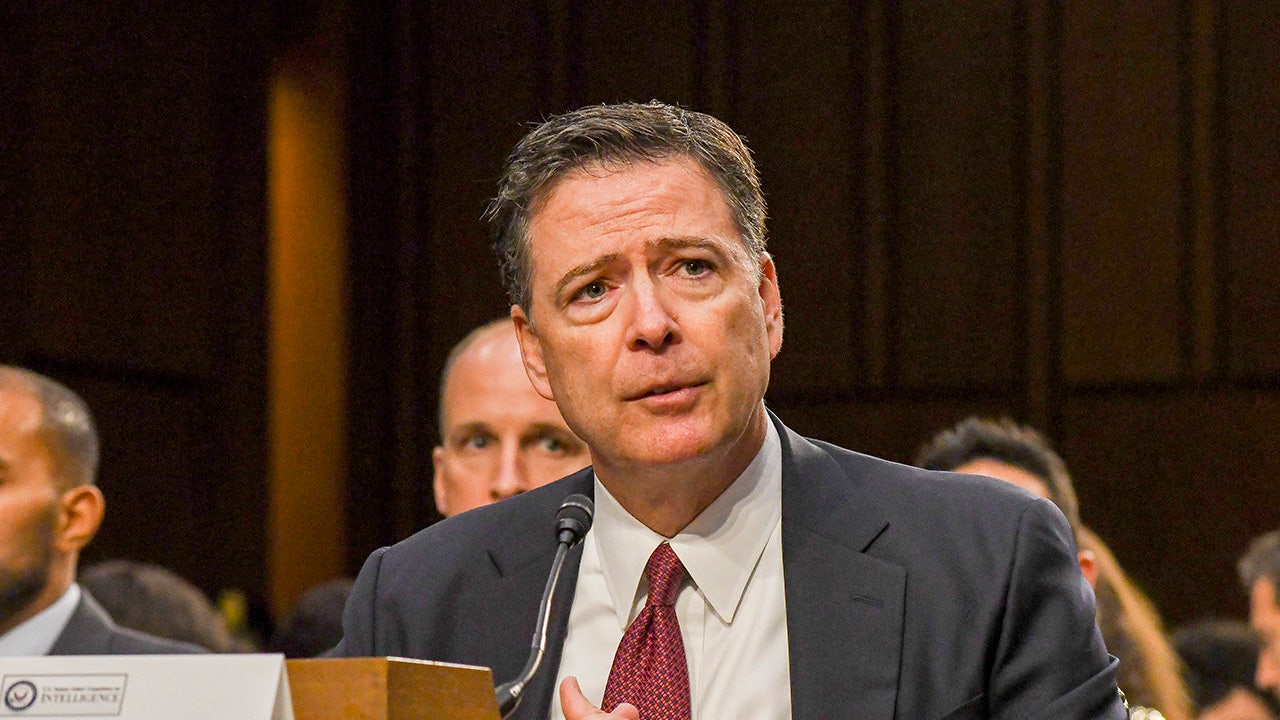Austin, TX
Support Artist Rex Hamilton While Enjoying Your PSL Latte

You might know Austin artist, Rex Hamilton from his various murals around Austin but this fall you’ll be able to enjoy your Starbucks Pumpkin Spice Latte with some extra spice. Hamilton is the latest artist to join in Starbucks Artist Collaboration Series. That means you’ll be able to find his drinkware collection in local stores!

Who is Rex Hamilton and how you might know his art?
YYou might not know his name but you most likely know Hamilton’s art. If you’ve ever seen the mural at Nasha on the east side, or if you’ve driven past the Be Well murals on Lamar Boulevard, you’ve seen his art. Maybe you know the Austin FC mural at Q2 Stadium or, perhaps, the mural above the Milagro Tequilla Bar at Moody Center. Not to mention he was the artist behind the official SXSW 2023 poster, the 2023 USGP F1 poster and many of the Austin FC match posters. Now you’ll be able to see and buy his work on drinkware at Starbucks!

What Hamilton has to say about his Starbucks collections:
“You see a lot of color growing up in Austin, I feel like that made an imprint on me and how I make art. I hope people feel happy and excited when they see this collection, like there’s a lot of energy radiating off them.” – Rex Hamilton
Hamilton’s collection showcases his unique artistic style, heavily influenced by the Austin Botanical Gardens. Growing up he spent a lot of time there with his family and it shows in his work. The collection consists of three different style cups in three different sizes. The 24-ounce plastic cold cup, adorned by the wildflowers of Texas, a 16-ounce stainless steel tumbler, honoring his late tabby cat, Ammee and a 12-ounce ceramic tumbler, featuring a red cardinal inspired by a cross-country road trip.



You can find his collection in Starbucks stores while supplies last!
Want more ways to support local? Try these:
All featured images courtesy Starbucks

Austin, TX
The seventh Google Store opens on May 30

At the end of this month, Google Store Domain Northside in Austin, Texas will open as the company’s seventh retail location in the US.
News about this location emerged in January, with Texas becoming the Google Store’s fifth state. It is located in an outdoor shopping area surrounded by restaurants, residential space, and corporate offices. There is a pretty big Apple Store in the area.
Located at 11701 Domain Blvd, Suite 164, Austin, TX 78758, the Google Store grand opening is set for Friday, May 30 at 10:00 AM CDT.

This is Google’s second store opening this year after Santa Monica, with this upcoming launch matching the two-store pace of 2024. It remains to be seen if there will be others this year.
As always, you can demo and buy Pixel phones, watches, earbuds, and tablets, as well as Nest smart home devices (like cameras and thermostats). There’s also Fitbit, other accessories, and branded Google merchandise.
Meanwhile, those in the area can order online and pick-up in the store, while Google offers troubleshooting, Pixel phone repair, classes, and other activities.
FTC: We use income earning auto affiliate links. More.
Austin, TX
Orlando Outpaces Honolulu, Hawaii, Austin, Texas, Cincinnati, Ohio, Salt Lake City as America’s Top Summer Travel Destinations During this Memorial Day Trip Surge, What Everyone’s Talking About – Travel And Tour World

Saturday, May 17, 2025
Orlando is officially leading the pack. As travelers pack their bags for the Memorial Day trip surge, it’s clear that Orlando outpaces every other contender. This year, it’s not just about sunshine and roller coasters—it’s about value, variety, and easy access. While cities like Honolulu, Hawaii, and Austin, Texas offer charm and excitement, Orlando delivers a complete summer travel package. And right now, everyone’s talking about it.
Meanwhile, Cincinnati, Ohio and Salt Lake City continue to attract savvy travelers with cultural gems and outdoor escapes. But even with their rising popularity, Orlando outpaces them in affordability, family appeal, and entertainment options. As the Memorial Day trip surge kicks off the season, the spotlight remains on Orlando.
People are skipping the long-haul flights to Honolulu, Hawaii in favor of quicker getaways. They’re choosing theme park thrills over live music in Austin, Texas. And while Cincinnati, Ohio and Salt Lake City offer great getaways, Orlando edges them out with sheer versatility.
What’s more, everyone’s talking about how Orlando has become the heartbeat of American summer travel. It’s the city that delivers on every front—fun, food, affordability, and family-friendliness.
So, as the Memorial Day trip surge fuels travel conversations nationwide, don’t be surprised that Orlando outpaces destinations like Honolulu, Hawaii, Austin, Texas, Cincinnati, Ohio, and Salt Lake City. This isn’t just a trend. It’s a travel takeover. And everyone’s talking about where they’re heading first.
Travel season is heating up—and so are travel prices. But even as airfare, hotels, and dining costs rise, your dream summer getaway doesn’t have to burn through your savings. A new study from WalletHub reveals the most affordable cities for summer travel in 2025, blending high value with high adventure.
Whether you’re looking to escape for a weekend or plan a multi-week vacation, these U.S. destinations rank highest in terms of cost, access, attractions, and overall travel convenience. What makes them stand out? Each city delivers a uniquely American experience—without the sticker shock.
WalletHub’s Methodology: What Makes a City Budget-Friendly?
WalletHub analyzed 100 major metro areas across six core metrics: travel costs and hassles, local expenses, attractions, weather, activities, and safety. The goal? To identify cities that offer the best value per vacation dollar.
Each destination was scored out of 100, creating a weighted average that puts both entertainment and economics into context. The cities topping the list aren’t just affordable—they’re also culturally rich, easy to navigate, and packed with reasons to visit now.
#1 Orlando, Florida – The Magic of Affordability
Orlando claims the crown this year, and not just because of its world-famous theme parks. While Disney and Universal attract families from around the globe, Orlando also offers incredibly affordable lodging (as low as $42 per night for 3-star hotels) and a surprising number of free and low-cost attractions.
Boat tours, art installations, lakefront parks, and quirky neighborhoods offer endless adventures without premium prices. Orlando blends luxury with budget-savvy fun, making it a no-brainer for travelers of all ages.
#2 Atlanta, Georgia – A Southern Star with Massive Value
Atlanta ranks second for many reasons: its strategic location, airport connectivity, and affordable access make it a central hub for both long-distance road trippers and air travelers. From free festivals and parks to low-cost entertainment, Atlanta stretches your dollar farther than most major cities.
It also shines with its vibrant food scene, rich Civil Rights history, and top-rated attractions like the Georgia Aquarium and World of Coca-Cola.
#3 Washington, D.C. – A Capital Experience That Doesn’t Cost a Fortune
America’s capital is surprisingly affordable. With dozens of free museums, national landmarks, and public gardens, D.C. offers one of the most enriching travel experiences in the U.S.—without spending big.
Hotels are reasonably priced, and public transport is convenient and safe. With a lower-than-average crime rate, Washington, D.C. is ideal for families, solo travelers, and cultural explorers alike.
Other Standouts: Culture, Comfort, and Cost-Saving All in One
Here are the remaining WalletHub top 15 affordable summer destinations for 2025:
- #4 Honolulu, Hawaii – Surprising entry, but off-season airfare and island deals make it more reachable than ever.
- #5 Austin, Texas – Live music, lakes, and low costs.
- #6 Cincinnati, Ohio – A Midwest gem filled with art and food festivals.
- #7 Salt Lake City, Utah – Outdoor adventure and calm, walkable neighborhoods.
- #8 Philadelphia, Pennsylvania – American history, vibrant culture, and walkable cityscapes.
- #9 Miami, Florida – Art Deco, beaches, and unbeatable summer hotel discounts.
- #10 Dallas, Texas – Museums, music, and modern family fun.
- #11 Knoxville, Tennessee – Gateway to the Smokies with a small-town vibe.
- #12 Tampa, Florida – Waterfront escapes and low-cost thrills.
- #13 Richmond, Virginia – Civil War history and Southern hospitality.
- #14 Chicago, Illinois – Big city adventure with surprising summer deals.
- #15 Oklahoma City, Oklahoma – Rodeos, rivers, and rising cultural status.
Why Budget Travel Is Booming in 2025
This year, travelers are getting smarter about their spending. Rising inflation and airfare costs are prompting tourists to seek greater value, not just the flashiest destinations.
Tourism boards across the country are responding by offering discounted travel packages, free public events, and hotel loyalty programs that reward extended stays. Many second-tier cities are investing in digital nomad amenities, local experience tours, and free public transit—all of which enhance the travel experience without increasing the price tag.
Moreover, family travel, road trips, and solo getaways are shaping 2025’s travel trends. Travelers want more authentic, local, and affordable experiences, and the destinations on this list deliver.
Travel Smarter: Tips for Booking Your Budget Getaway
Planning your summer escape? Here are a few quick strategies to maximize your travel dollar:
- Travel midweek: Tuesdays and Wednesdays often offer cheaper flights and hotel rates.
- Book early or last-minute: Dynamic pricing rewards both planners and flexible adventurers.
- Use fare alerts: Track routes to cities like Atlanta, D.C., and Orlando for sudden dips.
- Look beyond big chains: Boutique hotels, local rentals, and eco-stays often offer better value and experience.
- Bundle up: Many destinations now offer city cards that include transit, museum entries, and attraction discounts.
What This Means for the Travel Industry
The WalletHub list reflects a broader shift in American travel behavior. Tourists are gravitating away from the most crowded, overpriced destinations and toward cities with soul, affordability, and accessibility.
For airlines and hospitality brands, the message is clear: price transparency, local partnerships, and traveler trust are more valuable than ever. The smartest brands are already tailoring packages to these rising destinations, knowing that volume and value now go hand in hand.
Regional airports, budget airlines, and boutique hotel groups stand to gain the most—especially those that invest in infrastructure and digital outreach before peak summer hits.
Final Word: Don’t Let High Prices Cancel Your Summer Plans
Travel doesn’t have to be exclusive. And a tight budget shouldn’t stop anyone from exploring the incredible diversity of the United States. From oceanfront boardwalks in Florida, to the historic heartbeat of Philadelphia, to the rising food scenes in Cincinnati and Dallas, the options for affordable, inspiring travel are more accessible than ever.
This summer, skip the stress and embrace the savings. Let your budget take you somewhere unforgettable.
Tags: Austin, Chicago, cincinnati, Dallas, florida, hawaii, honolulu, Illinois, Knoxville, Memorial Day Trip, Miami, Ohio, Oklahom, oklahoma city, pennsylvania, Philadelphia, richmond, salt lake city, Tampa, Tennessee, Texas, Utah, Virginia

Austin, TX
It’s National Barbecue Day! Yelp names 2 Texas cities as the best for BBQ in America

Watch Texas football player Kelvin Banks Jr. tackle Austin’s best BBQ
Food critic Matthew Odam joins Texas Longhorns offensive lineman Kelvin Banks Jr. for a Statesman exclusive interview.
Fire up that grill — it’s National BBQ Day!
National BBQ Day is celebrated each year on May 16. So if you ever actually need an excuse to grab some Texas barbecue on a Friday, this is your chance.
To celebrate the day as well as the approach of summer, Yelp has rounded up a list of the cities with the best barbecue. And don’t worry: You won’t need to leave the state to enjoy the most delicious smoked meats and mouthwatering sauces in the country.
Austin, San Antonio have the best BBQ in America, Yelp says
Yelp reviewers, like Southern Living readers, determined that Austin and San Antonio have the best barbecue around. Yelp searches for “Texas BBQ” increased by 63% in the first quarter of 2025 compared to the first quarter of 2024.
Austin was hailed as the best barbecue city in the country — and if that comes as a surprise, you haven’t been paying attention. A couple of months ago, Southern Living named Franklin Barbecue as the best barbecue joint in Texas for the third year in a row. La Barbecue’s brisket received a coveted Michelin star last year.
Here’s what Yelp had to say about the Texas capital’s barbecue scene:
Whether you like slow-smoked beef brisket, pork ribs, or house-made sausages, Austin has earned its reputation as a top barbecue destination. The city’s food scene features legendary brick-and-mortar BBQ joints, such as Terry Black’s Barbecue, and food trucks, including Micklethwait Craft Meat in East Austin. Yelp users praise Austin’s barbecue for its simple seasonings, which let the quality of the meat shine. Trays of tender brisket, flavorful ribs, and pulled pork sandwiches are among the most photographed dishes. Many users also highlight the perfectly tender texture of the meats at spots like Interstellar BBQ and Salt Lick BBQ.
Coming in second on Yelp’s city rankings is San Antonio. Its diverse barbecue scene features iconic food trucks like Brisket Boys and Cake-N-Que.
Yelp had this to say about barbecue in San Antonio:
Home to top-rated joints like Curry Boys BBQ, Smoke Shack and Garcia Barbecue, this major Texas barbecue city takes the No. 2 spot on this year’s list. Yelp reviews frequently highlight the mix of classic BBQ spots and new fusion-inspired restaurants like Reese Bros Barbecue. San Antonio also boasts a thriving food truck and casual barbecue scene, with spots like Nelson’s BBQ — ranked No. 28 on our 2022 Top 100 Places to Eat in Texas list — which is known for its Texas-style brisket smoked over mesquite wood.
LIST: Best US cities for BBQ 2025
Here are the top 10 cities for barbecue, along with their top-rated barbecue spot, according to Yelp:
- Austin, TX: Jim’s Smokehouse
- San Antonio, TX: Curry Boys BBQ
- Kansas City, KS: Joe’s Kansas City Bar-B-Que
- Memphis, TN: Elwood’s Shack
- Charleston, SC: Lewis Barbecue
- Greenville, SC: Smoky Dreams Barbecue and Catering
- Honolulu, HI: Ty’s BBQ and Grill
- Tulsa, OK: Alpha Grill BBQ
- Durham, NC: Moe’s Original BBQ
- Nashville, TN: The Ridge Nashville
-

 Austin, TX1 week ago
Austin, TX1 week agoBest Austin Salads – 15 Food Places For Good Greens!
-

 Technology1 week ago
Technology1 week agoNetflix is removing Black Mirror: Bandersnatch
-

 World1 week ago
World1 week agoThe Take: Can India and Pakistan avoid a fourth war over Kashmir?
-

 News1 week ago
News1 week agoReincarnated by A.I., Arizona Man Forgives His Killer at Sentencing
-

 News1 week ago
News1 week agoWho is the new Pope Leo XIV and what are his views?
-

 Entertainment1 week ago
Entertainment1 week agoReview: 'Forever' is a sweet ode to first love (and L.A.) based on Judy Blume's novel
-

 News1 week ago
News1 week agoEfforts Grow to Thwart mRNA Therapies as RFK Jr. Pushes Vaccine Wariness
-

 Politics1 week ago
Politics1 week agoDepartment of Justice opens criminal investigation into NY AG Letitia James




















